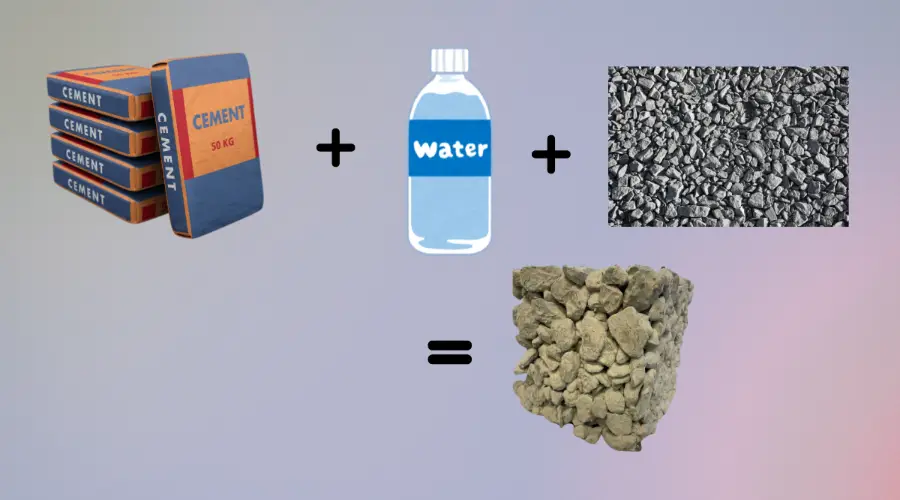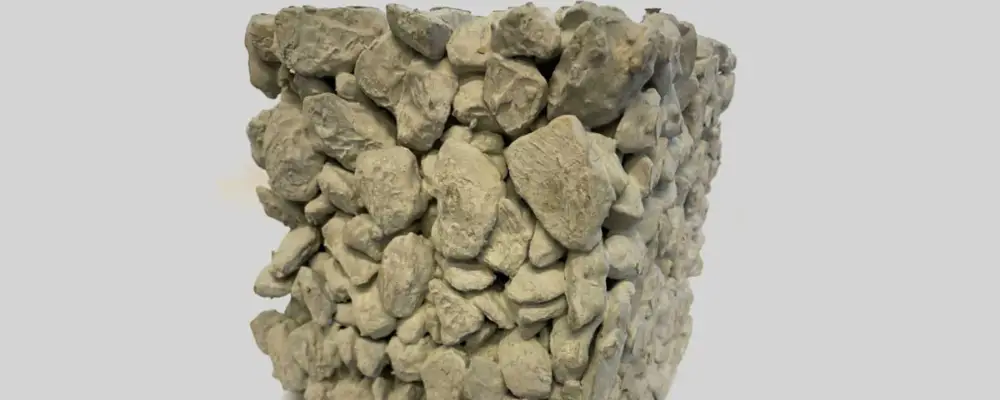There are numerous concrete mixtures used in the masonry and construction field, by adding different additives and aggregates into it. Among them, No Fines Concrete is unique, as itis made just using cement and coarse aggregates, without the use of fine aggregates (sand). Here we will take a look at what is No Fines Concrete and everything about it in detail.
What is No Fines Concrete?

No Fines Concrete is a concrete that is made without fine aggregates. It consists of normal Portland cement, water and coarse aggregate. These are lightweight concretes due to their large pore gaps. They have high permeability and drainage capacity and can help absorb rainwater and facilitate the drainage system.
Application of No Fines Concrete
No Fines Concrete is used in a wide range of applications including:
- Drainages
- Driveways
- Civil Infrastructure
- Landscaping
- Parks Gardens
- Load-bearing cast external walls of single & multi-storey buildings
- Small retaining walls
- Damp-proofing subbase material
- Gravity structures
Advantages & Disadvantages of No Fines Concrete
Advantages
- They can be used to provide one of the most effective drainage systems.
- They are lightweight materials and are easy to handle.
- They are cost-effective due to low cement use and no fine aggregates.
- The cavities within the concrete conduct low heat, acting as a good thermal insulator.
- The pore holes within the structure prevent the structure from external acoustic sounds.
- Segregation of concrete is low.
- The drying shrinkage is low when compared to normal concrete.
- The rodding method is adequate, and no expensive mechanical vibrators are needed for compaction.
Disadvantages
- The compressive strength and load-bearing capacity of the concrete are low, due to the high voids.
- They can be subjected to low strength and corrosion when used in exposed structures, although when combined with reinforced concrete.
- The consistency of concrete is not measurable.
- Casting the concrete wall adjacent to No Fines concrete walls is difficult and can be subject to leakage.
- The cohesion value of this concrete is very low, making it difficult to remove the formwork.
Properties of No Fines Concrete
Structure
The structure of the no-fines concreted is different from the conventional concrete. They have very high permeability, but their strength is low. The aggregates used in the concrete form a thin layer. They have a high void ratio due to their open structure. The compression could help the aggregate come into contact and improve the strength of the structure.
Shape
The aggregates are spherical and are of uniform sizes. This shape develops a large number of bonds and provides strength to the concrete. Flaky or elongated aggregates are not used, as they could reduce the strength of the concrete.
Permeability
The permeability of concrete depends on the materials and the placement of aggregates. Typically, the water flow through the concrete is between 120l/m²/min to 320l/m²/min.
Compressive Strength
The compressive strength of this concrete ranges from 3.5 Mpa to 28 Mpa, depending on its application.
Density
The density of the No Fines Concrete ranges between 1600 kg/m³ to 1900 kg/m³. The density varies based on the shape, size, aggregate-cement-water ratio and compaction of concrete.
Air-voids
The air voids in the concrete range from 13% to 28% depending on the aggregate-cement ratios.
Shrinkage
The drying shrinkage of the concrete takes place slowly when compared to conventional concrete. Typically, 50% to 80% of the shrinkage occurs in the first ten days. The lower shrinkage and surface texture cause random cracks and uncontrolled joints.
Composition of No Fines Concrete
- The coarse aggregate used in the No Fines Concrete should pass through a 20mm sieve and be retained on the 10 mm sieve.
- The aggregate-cement ratio of the concrete varies from 6:1 to 10:1, based on the application of the concrete.
- The water-cement ratio is kept within the 1600 to 1900 kg/m³ range. If lightweight aggregates are used, the density of the concrete can be further reduced by up to 300 kg/m³.
- The compressive strength of this concrete varies from 3.5 MPa to 28 Mpa.
Installation Steps
Prepare the Base
Clear the obstacles and level the site where the concrete needs to be installed. Dig a shallow trench of minimum depth and fill the area with compacted gravel. Place the framework in the base level of the required thickness.
Mixing of Concrete
Prepare the No Fines Concrete by adding cement, aggregate, and water in the appropriate ratio (6:1 or 10:1), until it attains the plasticity to get moulded into the required shape.
Pouring & Compacting
Pour the concrete into the moulds with a depth not exceeding 16 inches and compact the layer using a rod. The compaction of No Fines Concrete does not require any compactor or vibrator, as the simple rodding process is enough to fill the voids.
Place Reinforcement (if required)
Place the reinforcement steel bars into the concrete at equal intervals (if needed) to improve the strength. Using the reinforcements could help hold the concrete layers and improve stability.
Repeat
It is advisable to take at least 2 to 3 hours to pour the next layer of concrete, to achieve higher aggregate stability. After a pause, repeat the pouring and compacting process, not exceeding the 16-inch depth
Curing
Curing the No Fines Concrete is not necessary, as it could cure too soon after pouring into the moulds. However, it is necessary to keep the structure idle after compaction for 2-3 hours after each layering.
Remove Spills & Back Fill
If the concrete is spilled out in the face of the wall, remove the spillings using water and brush and backfill the concrete into the mould to fill the gaps.
Finishing
Use a low permeable fill on the last lift (8 to 12 inches), by placing a horizontal fabric layer above the previous layer before filling, to finish off the installation.
Layers of No Fines Concrete
Subgrade/Soil Layer
It is the ground surface that consists of the earth or soil, which is excavated up to a shallow depth. Any drainage or pipelines can be used in this layer.
Base Course
Above the soil is filled with base course, usually gravel or other coarse aggregates. They act as the base bed that separates the soil from the no fines concrete layer. The formworks in the base are introduced in this layer to initiate moulding.
No Fines Concrete Layer
No Fines Concrete is poured over the base course with the help of formwork. The concrete layer is filled layer by layer up to a certain height and compacted and cured at regular intervals.
Permeable Layer
Above the No Fines Concrete layer is the Permeable layer, which occupies the topmost layer and allows water to pass through the structure, reducing the runoff and recharging the groundwater.
Conclusion
No Fines Concrete is a unique concrete material that uses very little cement and no fine aggregates. It is packed with more void gaps, which makes it an effective drainage system. These are low-density concrete; however, it is used for numerous applications effectively. It is ideal for water-draining areas, and when combined with reinforced steel bars, can be used for constructing retaining walls. The usage of this concrete is visible in drainages, driveways, and many civil infrastructures.

